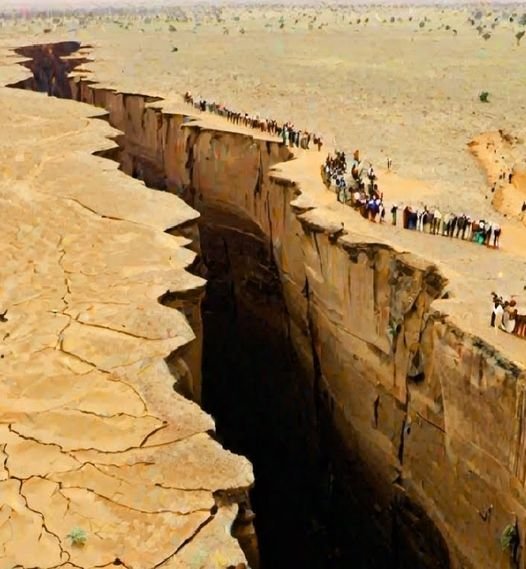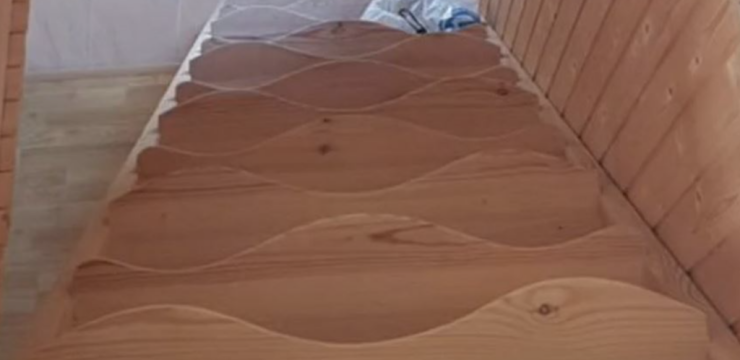
Around two decades ago, scientists and locals began noticing a strange and powerful geological phenomenon taking place beneath the surface of Africa. It started with earthquakes rumbling through regions that had rarely experienced seismic activity. In some places, the ground cracked wide open—so much so that, in one instance, a man’s house was split right down the middle. These weren’t just minor shifts in the Earth’s crust. They were signs of something much bigger brewing below: the continent of Africa is slowly breaking apart.
This isn’t science fiction or the plot of a disaster movie. It’s a very real process known as continental rifting, and it’s currently reshaping the African landscape in dramatic ways. But what exactly is causing this massive shift, and what does it mean for the people who live there today—and for future generations?
To understand the African Rift, we need to look deep below the Earth’s surface, where enormous tectonic plates float atop the molten rock of the mantle. These plates constantly shift and interact, although the movement is usually so slow that we don’t notice it in real time. In some areas, these plates grind against each other, leading to earthquakes and volcanic eruptions. In others, they pull away from one another—and that’s exactly what’s happening in East Africa.
The East African Rift System stretches from the Red Sea down through Ethiopia, Kenya, Tanzania, and Mozambique. This vast fracture zone is where the African Plate is slowly splitting into two smaller plates: the Nubian Plate on the west and the Somali Plate on the east. Over the next 5 to 10 million years—yes, this process takes millions of years—this rift could eventually form a brand-new ocean and divide the eastern portion of Africa from the rest of the continent.
While that may sound far-off and abstract, there are already very real consequences happening today. In 2005, a massive 35-mile-long crack opened up in the Afar region of Ethiopia following a series of earthquakes. In Kenya, roads have collapsed, and deep fissures have appeared in farmland. The changes are not just geological—they’re also affecting infrastructure, agriculture, and the daily lives of thousands of people.
Scientists believe that the rifting process is being driven by a superheated plume of magma rising from deep within the Earth’s mantle. As this plume pushes up, it thins and weakens the crust above it, eventually causing it to crack. Over time, these cracks grow wider and deeper, allowing new ocean water to flow in and creating the conditions necessary for a new sea or ocean to form. Think of it as nature’s version of slowly tearing a piece of paper in two—it doesn’t happen all at once, but once the process starts, it’s hard to stop.
The long-term implications of the African Rift are both fascinating and complex. If the rifting continues at its current pace, the Horn of Africa—which includes parts of Ethiopia, Somalia, Kenya, and other nations—could eventually break away and become a separate island continent. This would dramatically alter the geography of Africa, potentially creating new coastlines, ecosystems, and even climate patterns.
But for the people living in the affected areas, the rifting is already creating challenges. Communities are dealing with damaged homes, shifting land, and fears about future earthquakes or volcanic activity. Scientists and local governments are now working together to monitor seismic activity more closely and prepare for any major geological events that could happen in the coming decades.
At the same time, the rifting presents opportunities for scientific discovery and innovation. The unique geological activity in this region allows researchers to study the birth of a new ocean in real-time—something that hasn’t happened on Earth in millions of years. It also forces urban planners and engineers to think creatively about how to design infrastructure that can withstand the forces of nature over time.
In many ways, the African Rift serves as a reminder of how dynamic and ever-changing our planet truly is. Though these changes happen slowly, they have the power to reshape entire continents. Africa’s journey toward becoming two landmasses may take millions of years, but for the people living there today, the transformation is already underway.
By understanding the science behind the rift and preparing for its consequences, we can turn what might seem like a natural disaster into an opportunity for resilience, adaptation, and deeper knowledge of our incredible Earth.





